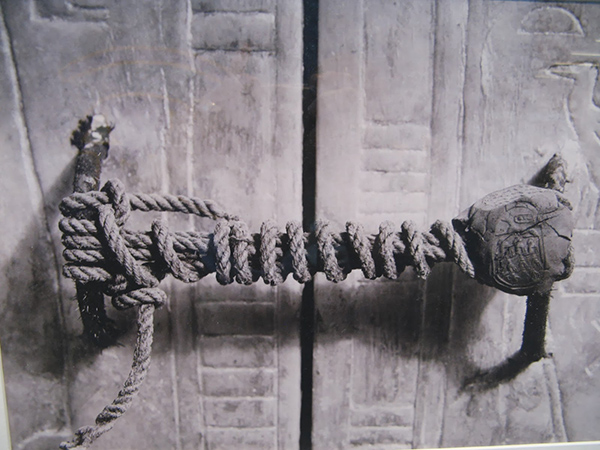This is a question that is frequently asked at this time of the year. We are told that after his crucifixion on Golgotha, the body of Jesus was laid in a new tomb, but he was raised from the dead three days later.


The resurrection of Christ was an important event that gives hope to many Christian believers, including ourselves.
However, from an archaeological point of view, I am interested to know how the tomb of Jesus was sealed. We know the story as recorded in the Gospels:
Matt. 27:62-66 On the next day, which followed the Day of Preparation, the chief priests and Pharisees gathered together to Pilate, saying, “Sir, we remember, while He was still alive, how that deceiver said, ‘After three days I will rise.’ Therefore command that the tomb be made secure until the third day, lest His disciples come by night and steal Him away, and say to the people, “He has risen from the dead.’ So, the last deception will be worse than the first.” Pilate said to them, “You have a guard; go your way, make it as secure as you know how.” So, they went and made the tomb secure, sealing the stone and setting the guard. (NKJV)
There are images on the internet that show ropes around the rolling stone or metal bars, but nothing would be strong enough to prevent such a large and heavy stone from being moved by a few strong men.
As I was researching this topic, I came across an image that shows the seal securing the entrance to a shrine of gilded wood that belonged to the Egyptian Pharaoh Tutankhamun. The handles of the two doors were secured together by a rope and a seal.

On the right handle was a clay seal featuring Anubis , the Egyptian god of funerary rites and protector of the gates to the underworld.
Again, such a piece of rope would not have prevented anybody from entering the tomb chamber. After more than three millennia, the seal was finally broken by Egyptologist Howard Carter in the early 1920’s.
The important thing about this sealing rope is not the rope itself, but the clay seal that is attached to the door handle on the right. This shows the authority of the person who had ordered the sealing, and anybody trying to break that seal would be accountable and suffer the consequences.

The tomb of Jesus was sealed on the authority of the High Priest which was either Annas or Caiaphas. The tomb was sealed using two patches of wax connected with a piece of rope. People knew that anybody breaking that seal would be held accountable to the High Priest. From a factual point of view, the string was ineffective, but the authority of the High Priest would have been respected. However, angels are not subject to this authority. Their only desire is to do the will of God. The earthquake that is described in Matthew 28:2 was brought about by the angel of the Lord who had descended from heaven. He would have been the one who broke the seal and rolled back the stone from the door.
At the same time Jesus was raised from the dead in fulfilment of Psalm 16:10-11:
“For You will not leave my soul in the grave, nor will You allow Your Holy One to see corruption. You will show me the path of life; in Your presence is fullness of joy; at Your right hand are pleasures forevermore.”
Jesus never sinned during his life on earth and was rewarded with immortality. Let us then follow Christ who suffered for us, leaving us an example, that we should follow His steps.

